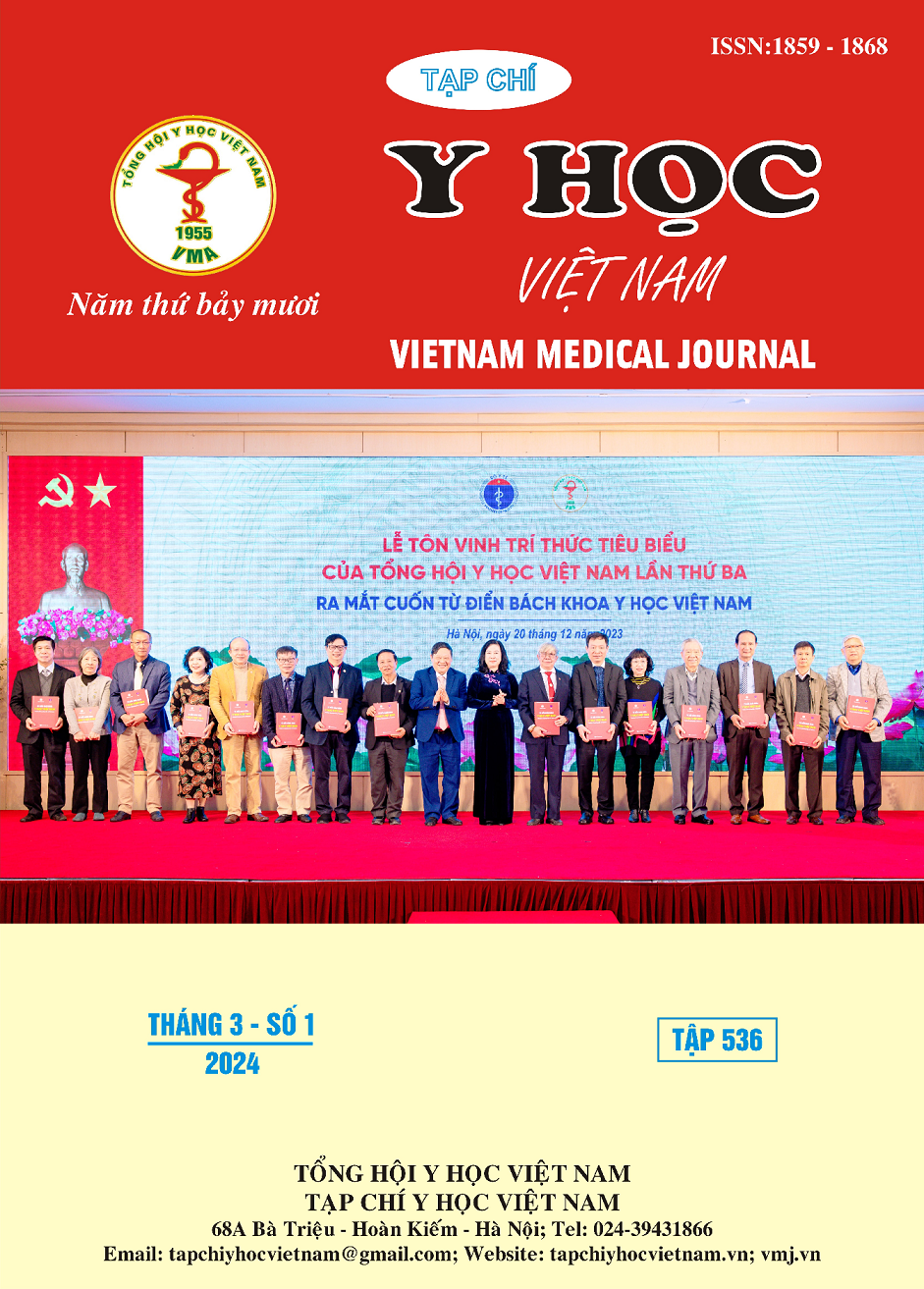PREVALENCE OF VERTEBRAL COMPRESSION FRACTURE AND RELATED FACTORS IN ELDERLY WOMEN WITH OSTEOPOROSIS
Main Article Content
Abstract
Objectives: To investigate the prevalence of vertebral compression fracture and related factors in older women with osteoporosis. Methods: This cross-sectional study was conducted on 279 older women with osteoporosis at the Rheumatology and Neurosurgery department, and Rheumatology clinic, University Medical Center, from August 2022 to May 2023. Clinical symptoms, thoracic–lumbar spine radiologic results, bone mineral density and related factors were collected. Results: 102/279 (36,6%) older women have at least one vertebral fracture and more than 50% of participants present as symptomatic. Age, marital status, physical activity, hypertension, diabetes mellitus, osteoarthritis, ischemic heart disease, frailty, falls, and T-score at femoral neck, total hip and lumbar spine are associated with vertebral compression fracture. When using multivariate logistic regression, only physical activity (OR: 0,44; 95% CI: 0,20 – 0,94; p = 0,038), osteoarthritis (OR: 0,24; 95% CI: 0,12 – 0,48; p <0,001), frailty (OR: 7,41; 95% CI: 3,45 – 16,73; p <0,001); falls (OR: 3,86; 95% CI: 1,68 – 9,32; p = 0,002), T-score at femoral neck (OR: 0,63; 95% CI: 0,41 – 0,92; p = 0,002) are associated with vertebral fracture. Conclusion: The prevalence of vertebral compression fracture is quite high among elderly women with osteoporosis, highlighting a disease burden in this population. Physical activity, osteoarthritis, higher T-score at femoral neck are protective factors while frailty and falls are risk factors of vertebral fracture.
Article Details
References
2. Bastos LA, Tavares DRB, Okazaki JEF, et al. High Prevalence of Vertebral Fracture in a Very Elderly Community-Dwelling: "Longevous Project". J Clin Densitom. 2020;23(3):497-502.
3. Fink HA, Milavetz DL, Palermo L, et al. What proportion of incident radiographic vertebral deformities is clinically diagnosed and vice versa? J Bone Miner Res. 2005;20(7):1216-1222.
4. Genant HK, Wu CY, van Kuijk C, Nevitt MC. Vertebral fracture assessment using a semiquantitative technique. J Bone Miner Res. 1993;8(9):1137-1148.
5. Middleton R, Poveda JL, Orfila Pernas F, et al. Mortality, Falls, and Fracture Risk Are Positively Associated With Frailty: A SIDIAP Cohort Study of 890 000 Patients. J Gerontol A Biol Sci Med Sci. 2022;77(1):148-154.
6. LaMonte MJ, Wactawski-Wende J, Larson JC, et al. Association of Physical Activity and Fracture Risk Among Postmenopausal Women. JAMA Netw Open. 2019;2(10):e1914084.
7. Chan MY, Center JR, Eisman JA, Nguyen TV. Bone mineral density and association of osteoarthritis with fracture risk. Osteoarthritis Cartilage. 2014;22(9):1251-1258.
8. van der Jagt-Willems HC, de Groot MH, van Campen JP, Lamoth CJ, Lems WF. Associations between vertebral fractures, increased thoracic kyphosis, a flexed posture and falls in older adults: a prospective cohort study. BMC Geriatr. 2015;15:34.


